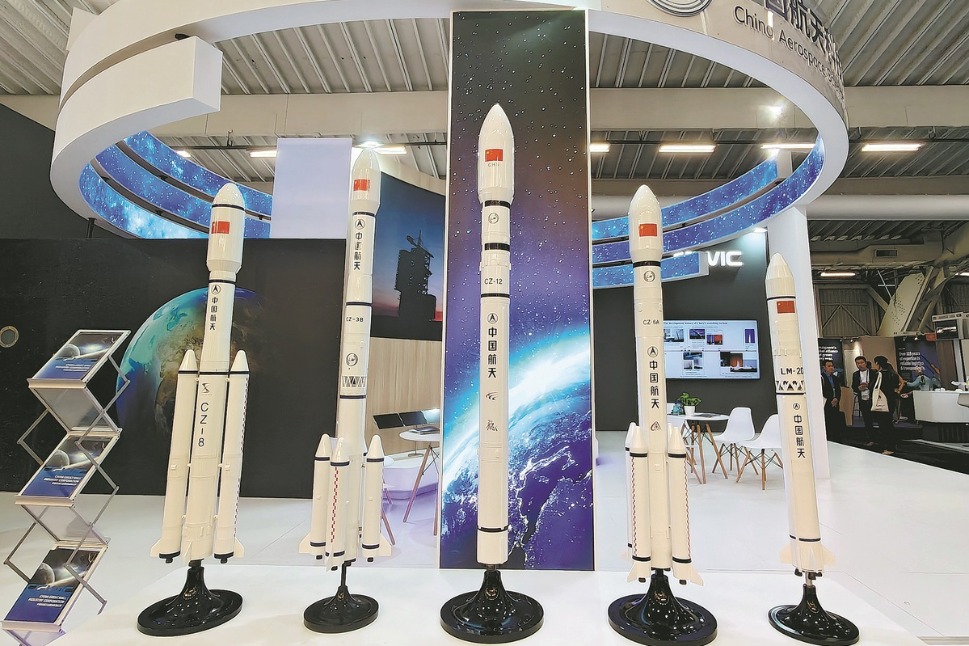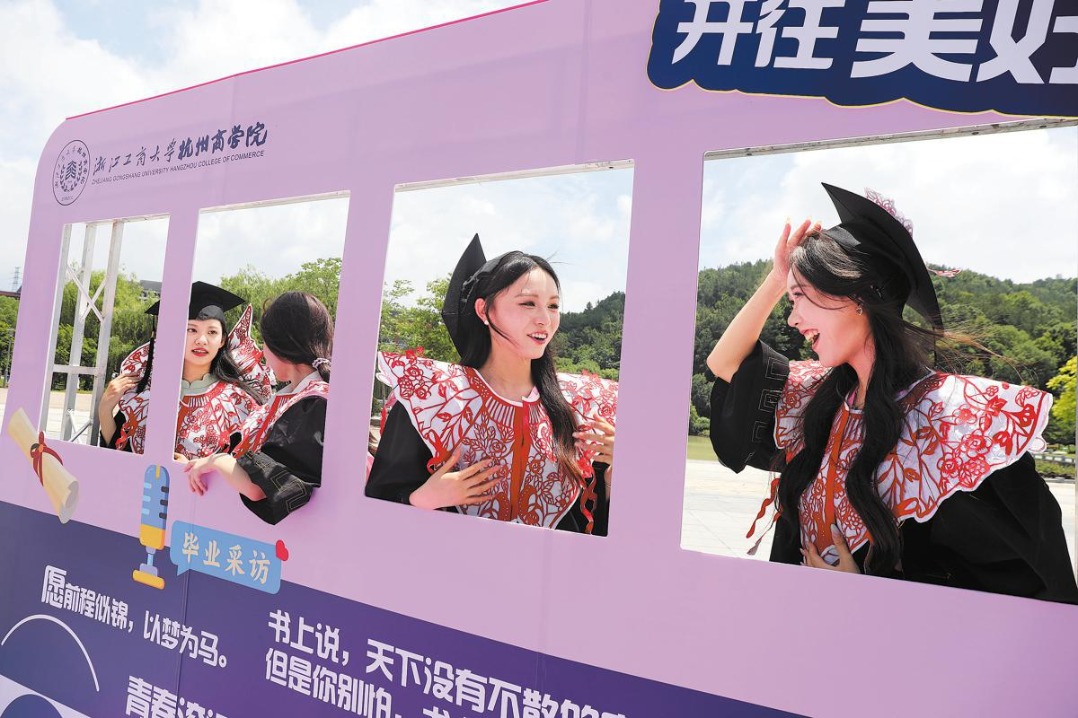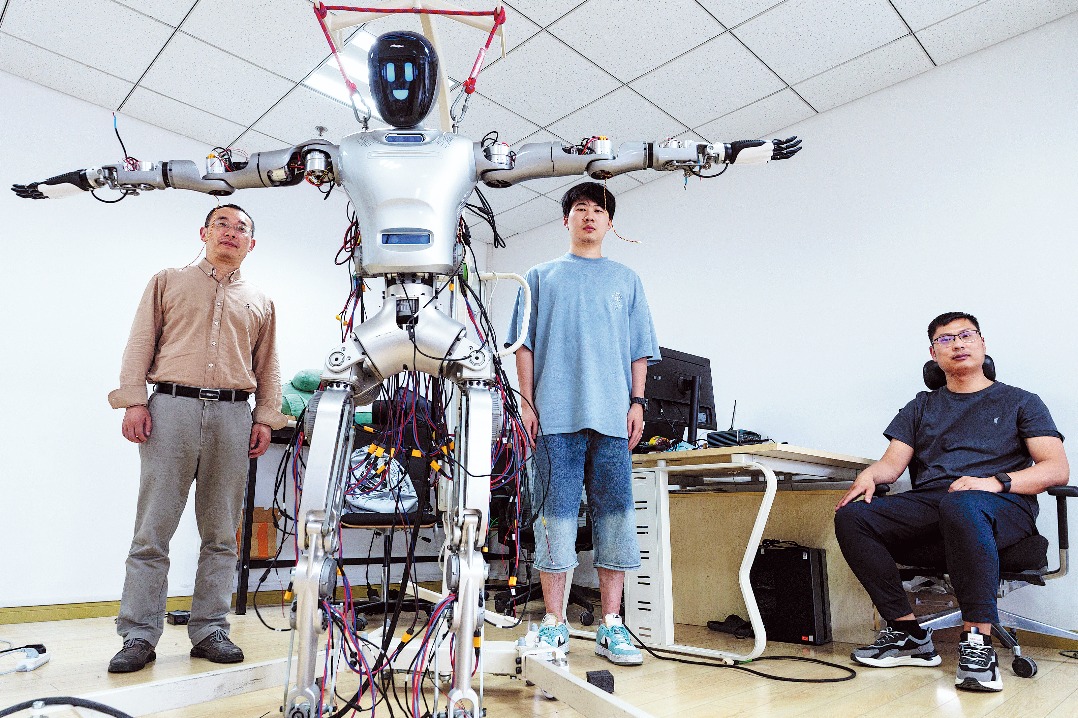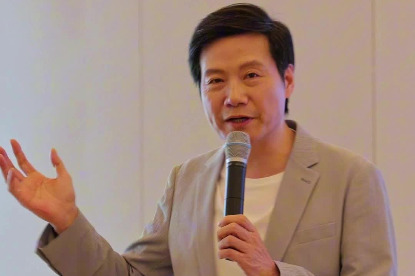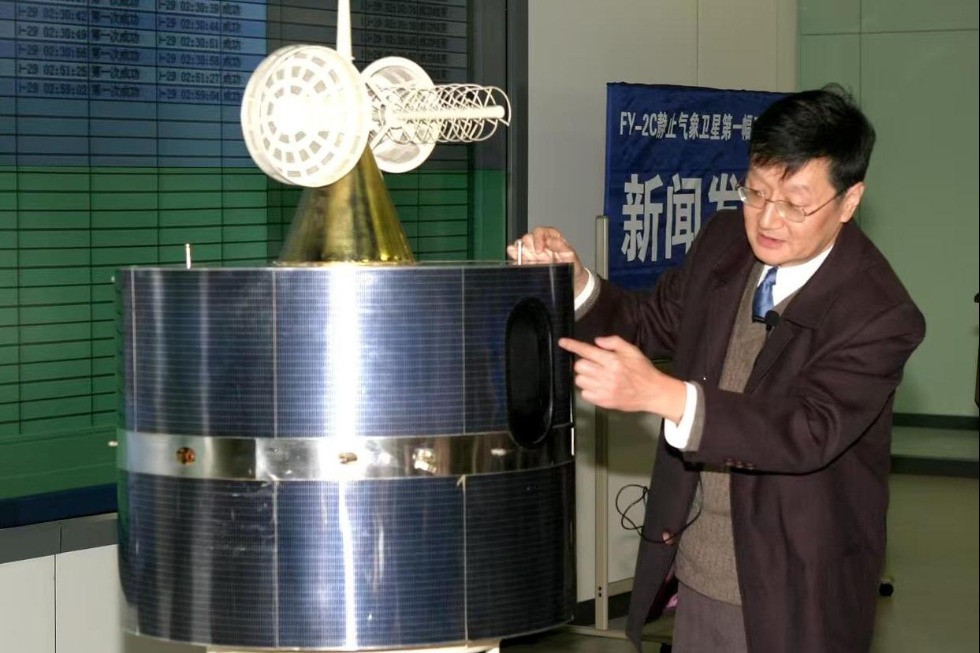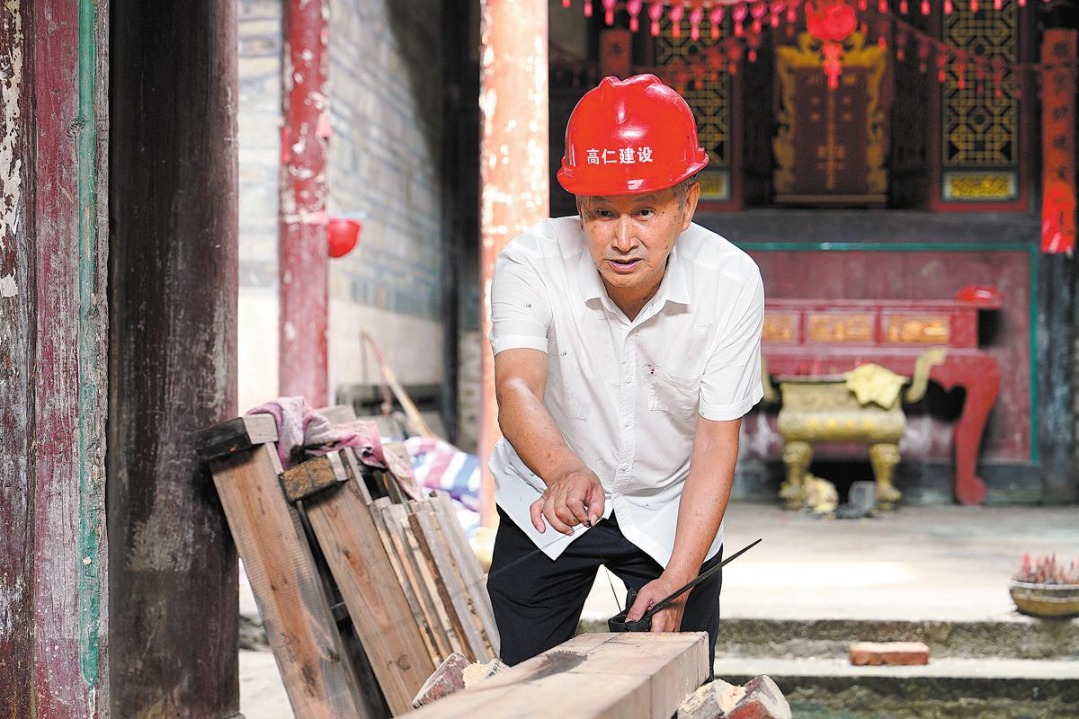The fanfare is to the north

Hong Kong's future Northern Metropolis is destined to be a mecca for state-of-the-art technologies and a self-contained community, while positioning the city as a global high-tech, financial and logistics hub. Wang Yuke reports from Hong Kong.

A lackluster place with mediocre offerings and huge swaths of farmland and brownfields that are either underused or abandoned. That's Hong Kong's northern New Territories, which is set to become an effervescent new town, abuzz with state-of-the-art technologies and jaw-dropping innovations.
And there will be a host of go-getters ensuring that the innovation and technology there will never go flat.
It isn't an imagined scenario for a distant future. It's ready to roll under the Northern Metropolis Development Strategy, unveiled by Hong Kong Chief Executive Carrie Lam Cheng Yuet-ngor in her 2021 Policy Address. The vision is to transform northern Hong Kong into a metropolis and a home to 2.5 million people. There would be 650,000 jobs up for grabs, including 150,000 in the innovation and technology sector, with a premium placed on innovation and technology development through integration and collaboration with neighboring Shenzhen.
An ultimate "twin cities, three circles" would come into being. The "twin cities" refer to Hong Kong and Shenzhen, while the "three circles" cover the Shenzhen Bay Quality Development Circle, the Hong Kong-Shenzhen Close Interaction Circle, and the Mirs Bay/Yan Chau Tong Eco-recreation/tourism Circle.
It's proposed that the Lok Ma Chau Control Point be relocated to the new Huanggang Boundary Control Point in Shenzhen. The vacated land, along with the original land-use plans for the San Tin/Lok Ma Chau Development Node, will provide about 150 hectares of additional land to develop the San Tin Technopole.
The Technopole is being formed by Hong Kong-Shenzhen Innovation and Technology Park and the area around Lok Ma Chau/San Tin, where an estimated 240 hectares will be provided for inno-tech-related use. This area, plus the Shenzhen Innovation and Technology Zone, will form the Shenzhen-Hong Kong Innovation and Technology Cooperation Zone, covering a total of about 540 hectares.
Wong Kam-fei, director of the Centre for Innovation and Technology at the Chinese University of Hong Kong, says the Northern Metropolis project is one that's "never been seen before" and is progressive. The Hong Kong Special Administrative Region is taking a "top-down" approach in setting out the road map in line with the nation's 14th Five-Year Plan (2021-25), which encourages Hong Kong's integration into the overall development of the Guangdong-Hong Kong-Macao Greater Bay Area and positions Hong Kong as an international inno-tech, financial and logistics hub.
"In the previous Policy Addresses, we have never seen the government talking about Hong Kong-Shenzhen collaboration in such an open and clear-cut manner," says Wong. This shows the government's resolve in the Northern the the Northern Metropolis development, and the blueprint is the fruit of intensive contemplation and examination. To ease Hong Kong's integration with the Greater Bay Area, he said, he believes Hong Kong could use Shenzhen as a "connector."
'R&d' vs 'r&D'
Research and development is part and parcel of inno-tech. While R&D will be in full swing across the entire Northern Metropolis district, there is a distinction between "R&d" and "r&D", Wong says. In the middle of the Northern Metropolis, where the San Tin Technopole is located, "R" and technology transfer will take center stage.
R&D in the fields of biomedicine, chemistry, artificial intelligence and other health and life disciplines will get priority in the Technopole as an InnoLife Healthtech Hub will be launched at the Hong Kong-Shenzhen Innovation and Technology Park.
But in the western area, covering Hung Shui Kiu and Shenzhen's Qianhai, the "D", or development, will be front and center because existing innovative technologies are to be harnessed to explore the digital market and give a push to digital commerce — namely, the modern service industry.
In the eastern part — stretching from Mirs Bay, Plover Cove and Sai Kung Country Parks on the Hong Kong side to Yantian district and the Dapeng Peninsula in Shenzhen — close cooperation between Hong Kong and Shenzhen will focus on ecological conservation, leisure activities and tourism. So green technology for environmental benefits will dominate R&D activities.
But Hong Kong's southern region has tried-and-true commercial and financial experience under its belt and will continue to explore financial innovations under the government's policies. Hence, finance in the south and innovation in the north will make up a complete and holistic picture of Hong Kong's inno-tech development in the next five to 10 years, Wong says.
Hong Kong has supportive institutions, primarily Science Park and Cyberport, for incubating startups, sparking an inno-tech "eureka" moment, and bridging researchers and businesses. However, there is a slew of constraints in Hong Kong's progress on R&D. "The city's two parks have reached a saturation point because of the mismatch between the growing influx of companies and restricted space," he says.
But some people are skeptical of Cyberport being turned into a commercial and real estate project — a departure from its focus on propelling the growth of local startups, as well as technological innovation — given that properties in Cyberport are for sale, said Wong. "But the government is adamant there will be no real-estate activities in the Technopole. The property there will only be for rent, reflecting the government's sole intent on inno-tech development."
If there is anything to go by, the target market will be the Greater Bay Area, Wong says. Startups in Hong Kong are hamstrung by the small local consumer market that isn't sizable enough to provide a testing ground for prototypes.
Hong Kong excels in academic research, with four of its universities among the world's top 100 tertiary educational institutions, according to the Times Higher Education World University Rankings 2022. But when it comes to commercializing research projects, Hong Kong has failed in the game, says Ling Kar-kan, a strategic planning adviser for Hong Kong/Shenzhen Co-operation.
Technology transfer involves proof of concept and prototyping, explains Wong, putting engineers and technicians in high demand. "There are more such professionals in Shenzhen and in (other cities of) the Greater Bay Area. They can take advantage of the convenient facilities and policies in the Northern Metropolis and come to Hong Kong to give technological commercialization a lift."
Startups in Hong Kong are hard-pressed for various reasons when trying to take off. While the government-financed Incu-Tech startup incubation program launched by Hong Kong Science and Technology Parks Corp and Cyberport supports local startups through business matching, marketing and financial aid, the application success rate is pessimistically low. Only 16 to 30 percent of startups had benefited in 2018, according to a questionnaire survey report by the Hong Kong Trade Development Council last year. The survey also found that some entrepreneurs had inadvertently breached the law or regulations when they innovated, citing the unbendable and outdated laws as the cause. The shortage of professionals has also left many startups with no choice but to move to the Greater Bay Area as a last resort.
"Startups need capital to start with, talents to grow, as well as pilot projects available with different stakeholders to acquire proof of concept to expand," says Viola Lam Yuen-lee, CEO of Find Solution Ai — a startup specializing in personalized innovative solutions. "It takes an average of 18 months to commercialize a technology."
Capital, a network with industries, and an environment conducive for users to embrace new technology are vital, Lam says. "Hong Kong is slightly hesitating in adopting new innovation, and this discourages the growth of startups."
Wong, however, believes that the startup-friendly environment in the future Northern Metropolis could help Hong Kong's budding companies overcome such problems. The Northern Metropolis is by no means the end destination for Hong Kong startups. "They want to reach out to the central part of the Chinese mainland and abroad," he says.
Acting as the "middleman", the Northern Metropolis will facilitate Hong Kong startups in prototyping and manufacturing before they can either choose to branch out to the mainland beyond the Greater Bay Area, or return to Hong Kong for initial public offerings and go overseas.
Technology financing is not simple as it seems, Wong stresses. Startups have to find the right investor who can offer not only cash but also advice about the technology and market. "So for companies looking to go international, Hong Kong is the place to be," as Hong Kong is a city where investors with an international market insight abound, he says.
Important networks
Lam is keen to establish a branch for her company in the Northern Metropolis, where she can secure the coveted "capital, network and environment", adding, "I have a friend who has set up a software company in the metropolis district and is faring well."
In Ling's view, any move to attract inno-tech professionals would be ineffective without a well-curated transportation network. Wong agrees that a sound logistics infrastructure is key to a city's development plan. The importance of railway links between Hong Kong and Shenzhen for the ease of professionals commuting back and forth and as a selling point to lure professionals has been on the radar of both governments. Five new railways linking the two cities are in the pipeline to provide a speedy and easy route for professionals who need to commute regularly between Hong Kong and the mainland.
Other plans include implementing innovative immigration clearance arrangements to facilitate regular cross-border travel of inno-tech practitioners in Hong Kong and Shenzhen; enhancing internal and external transportation of the San Tin/ Lok Ma Chau area; integrating the San Tin Technopole with the existing Lok Ma Chau Spur Line Station, Hong Kong Science and Technology Park, and the San Tin/Lok Ma Chau Development Node; and connecting the Technopole with the Futian and Huanggang districts in Shenzhen.
Georges Hung Huai-che, design director at Gensler — a global integrated architecture, design and consulting firm — is involved with major Hong Kong property developers in conceptual design for HKSTP buildings in the Lok Ma Chau Loop.
His design for the buildings sounds like a futuristic make-believe. But as the construction and design of the first batch of eight buildings are essentially underway, it may not be futuristic at all. The complex will be a "hybrid campus" where "live, work, learn and play" are just a stone's throw from each other, Hung says.
An R&D apparatus, leisure infrastructure, retail, sports facilities and open space for socializing will be all under one roof in a multifunctional and mix-used building of about 30,000 square meters. "It's a resilient and self-contained community celebrating a 15- and 20-minute life cycle," says Hung.
Flexibility is a central theme of the building design. R&D facilities can be easily modified to support different types of research. For instance, he says, space has been adapted for bioscience R&D to accommodate robotics or automobile development.
How could the purpose-built architecture benefit startups there? Startups thrive on collaboration and eureka moments out of serendipitous encounters with people in the area or from other disciplines. To Hung, this is a relevant factor in the design equation. The no-clear-cut definition of office place and respite space, which is the genesis of his concept, creates opportunities for entrepreneurs to mingle around and extract ideas from serendipity. He sums it up as "working while not working".
For example, a startup doing R&D on robotics could draw inspiration from people watching in the central atrium — people's movements, gestures, expressions and way of interaction when bumping into each other. These behavioral cues could later be translated into their robotics development or used to refine their products. This added bonus of public-space interiorization or office-space externalization, whatever one may call it, boils down to the spontaneous encounters and interactions at any moment when people criss-cross each other.
The Northern Metropolis in the making will be shaped by existing inno-tech and inspire more inno-tech. It will dictate the sector's future trend in Hong Kong, the Greater Bay Area, and the world.
















